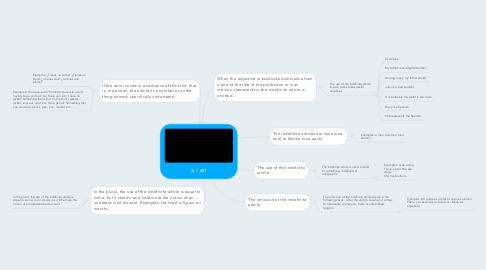a / an
by Jeffrey Hernández


1. If the item is used in a sentence of this kind, that is, in general, the article as a number or as the thing named, specifically understand.
1.1. Ejemplos: ¿Tienes un coche? ¿Tienes un lápiz? ¿o tienes dos? ¿o tienes una pluma?
1.2. Examples: You have a car? Something used to avoid having to go on foot: car, truck, van, etc. I have no jacket. Something that is put on the shirt: sweater, jacket, raincoat, coat, etc. Have pencil? Something that you can write: pencil, pen, pen, marker, etc.
2. In the plural, the use of the indefinite article is equal to some, but it stands -as a little more the notion of an undetermined amount. Examples: He lived in Spain six months.
2.1. In the plural, the use of the indefinite article is equal to some, but it stands -as a little more the notion of an undetermined amount.
3. The indefinite articles are male (one, one) or female (one each).
3.1. Examples: a man a woman men women
4. The use of the indefinite article
4.1. The indefinite article is used to refer to something undefined or nonspecific.
4.1.1. Examples: I see a dog. I have a pen. We see dogs. She has feathers.
5. The omission of the indefinite article
5.1. The omission of the indefinite article occurs in the following cases: After the verb to be when it comes to nationality, profession, trade or unmodified religion.
5.1.1. Ejemplos: Mi padre es profesor. Juan es alumno. Pablo y su esposa son católicos. María es española.
6. When the adjective or predicate nominative form a part of the title of the profession or is an intrinsic characteristic, the indefinite article is omitted.
6.1. The use of the indefinite article in such cases take special emphasis
6.1.1. Examples:
6.1.2. My father is an English teacher.
6.1.3. Among many, my father stands.
6.1.4. Juan is a bad student.
6.1.5. It is probably the worst in the class.
6.1.6. Mary is a Spanish.
6.1.7. She represents the Spanish.

